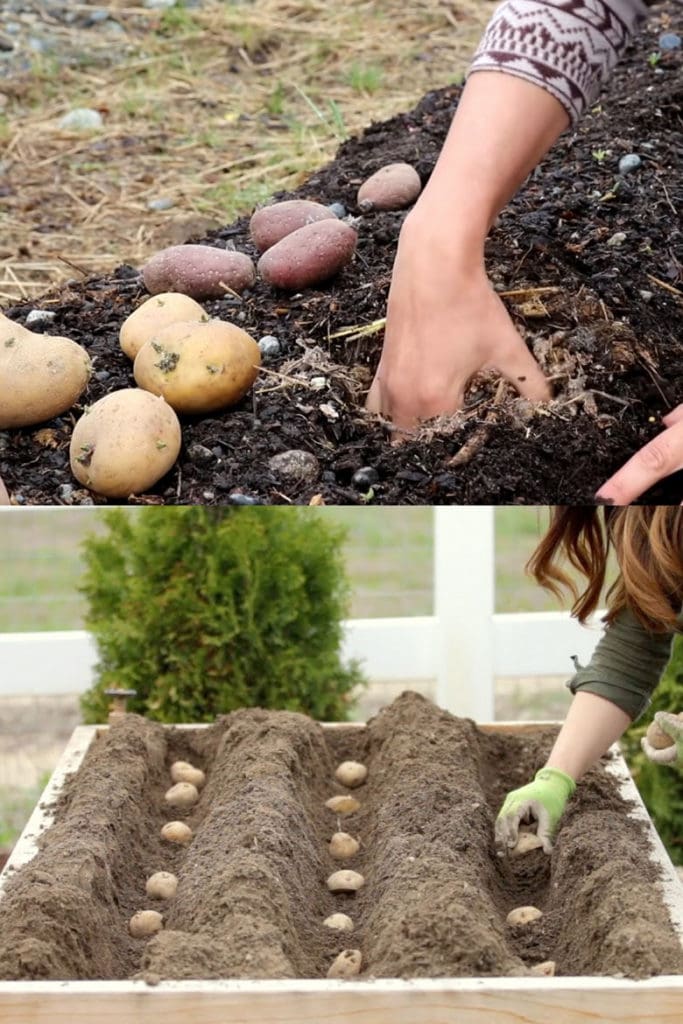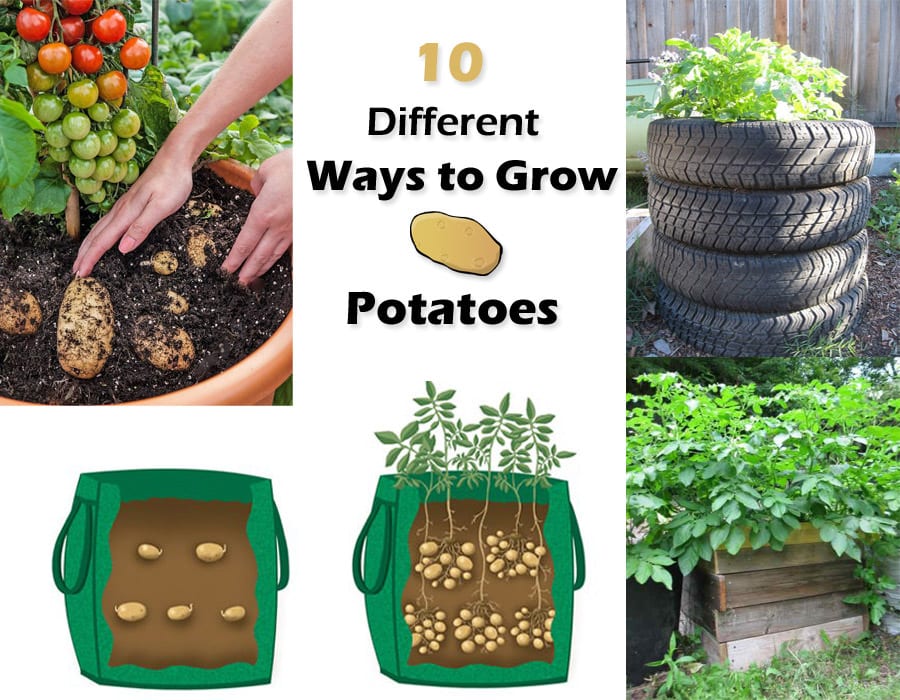How To Plant Potatoes For A Bountiful Harvest This Season
Thinking about growing your own food, you know, right in your backyard? Planting potatoes is, actually, a truly rewarding experience, offering up fresh, earthy goodness straight from the soil. There is something incredibly satisfying about digging into the ground and finding those little treasures, especially when you've put in the effort yourself. For many, it's a simple joy that connects us back to nature, and it's a way to truly appreciate where our food comes from.
Whether you have a big garden plot or just a few containers on a patio, potatoes are, arguably, quite adaptable. They don't ask for too much, and they give back so much in return. Learning how to plant potatoes means you get to enjoy those delicious spuds, maybe even for months, and it gives you a sense of accomplishment, too it's almost.
This guide will walk you through, you know, every single step, from picking the right kind of potato to harvest time. We'll share some practical tips and, in a way, show you how to give your plants the best start possible, so you can enjoy a really great crop. Let's get those hands dirty, shall we?
- Despacito Lyrics English Song
- Sid The Sloth Ice Age
- Susan Mikula Photography
- Taco Bell Steakhouse Burrito
- How Many 0 For Billion
Table of Contents
- Getting Started with Potato Planting
- Preparing the Ground for Your Potato Plants
- The Planting Process: Step-by-Step
- Caring for Your Growing Potato Plants
- Harvesting Your Homegrown Potatoes
- Common Questions About Planting Potatoes
Getting Started with Potato Planting
Starting your potato patch, you know, it feels like the true beginning of something good. There are a few important things to think about before you even get a shovel in the ground. Getting these steps right, actually, makes a big difference in how your plants grow and how many potatoes you get.
Choosing Your Seed Potatoes
The first thing you need is, well, seed potatoes. These are not just any old potatoes from the grocery store, you know. Seed potatoes are, in some respects, specially grown to be free from diseases, which means a healthier start for your crop. You can find them at garden centers or through online suppliers, often in the late winter or early spring, more or less.
When you pick them out, look for ones that are firm and, you know, have a few "eyes" on them. These "eyes" are where the sprouts will come from. If your seed potatoes are big, you can cut them into pieces, just a little. Make sure each piece has at least one or two eyes, and let them dry for a day or two before planting, so they form a sort of protective skin, basically.
Chitting Your Potatoes: A Head Start
Chitting is, actually, a pretty simple trick that gives your potatoes a head start. It means letting them sprout a bit before they go into the ground. To do this, you know, just place your seed potatoes in a cool, bright spot, but not in direct sunlight. A garage window or a spare room works well, perhaps, for a few weeks before planting time.
You'll see small, green or purple sprouts appear from the eyes. These sprouts are, you know, the beginnings of your potato plant. This step isn't strictly necessary, but it can, in a way, lead to an earlier harvest and maybe even a better yield, so it's often worth the small effort, you know.
Picking the Right Spot and Soil
Potatoes, you know, they really love the sun. So, pick a spot in your garden that gets at least six to eight hours of direct sunlight each day. This is, actually, pretty important for their growth. They also need ground that drains well, so water doesn't just sit around their roots, which can cause problems, you know.
The ground itself should be, like, loose and rich, full of good stuff. Potatoes don't do well in heavy, compacted ground. If your ground is a bit on the clay side, you know, you'll want to add some organic material, like compost, to loosen it up. This helps the roots grow easily and lets water move through, which is, actually, a good thing.
Preparing the Ground for Your Potato Plants
Getting the ground ready is, you know, a big part of planting potatoes well. It sets the stage for healthy plants and a good harvest. Taking the time to do this right, in fact, can make all the difference in how your potato patch turns out.
Soil Amendments and Drainage
Good ground is, actually, the foundation for strong potato plants. Potatoes like ground that is slightly acidic, with a pH between 5.0 and 6.0. You can, you know, get a soil test kit to check your ground's pH if you want to be really precise. If your ground needs a little adjustment, you can add things like sulfur to make it more acidic, or lime to make it less so, in some respects.
Adding plenty of organic matter, like well-rotted compost or aged manure, is, arguably, one of the best things you can do. This helps the ground hold moisture, but it also helps it drain well. For me, you know, putting a little something extra right there in the hole, like a plant starter, made a really big difference. It was, sort of, a great help getting those new plants settled, as I was saying. I found it, you know, really effective for starting new plants in their home, better than anything else I had used, actually.
Planting Depth and Spacing
When it comes to putting those seed potatoes in the ground, how deep you go and how far apart you place them, you know, it matters. Generally, you'll want to plant them about 4 to 6 inches deep. If you're planting in rows, leave about 12 inches between each seed potato. This gives them enough room to grow and, you know, for the new potatoes to form.
If you're planting in rows, you'll want to leave about 2 to 3 feet between the rows. This space, you know, is important for walking between them, for hilling up later, and for making sure each plant gets enough light and air. It just gives them all the room they need, basically.
The Planting Process: Step-by-Step
Now comes the fun part, actually putting those chitted seed potatoes into their new home. This is, you know, where your planning and preparation really pay off. Take your time with these steps, and you'll be well on your way to a great harvest, you know.
Digging Your Trenches or Holes
You can plant potatoes in trenches or in individual holes, depending on your method. For trenches, you know, dig a furrow about 6 to 8 inches deep. If you're doing individual holes, make them about the same depth and, you know, about 12 inches across. The goal is to create a good spot for each seed potato.
Make sure the bottom
- Bhad Bhabie Net Worth
- Drew Pritchard En La Actualidad
- Carly Jane Leaks
- Ripple Ceo Brad Garlinghouse Xrp Tattoo
- Kelsey Chow Movies And Tv Shows

How to Plant Potatoes! 🥔🌿 // Garden Answer - YouTube

How to Grow Potatoes: 5 Steps to A Big Harvest - A Piece Of Rainbow

How To Plant Potatoes In A Pot - Plant Ideas